History of the Museum
The Musée du Compagnonnage opened its doors at Easter 1968. We owe it to the perseverance of Roger Lecotté (1899-1991), curator at the Bibliothèque Nationale (National Library) and specialist in folklore and compagnonnage. From 1951 on, he strove to persuade the compagnons’ associations of the need to preserve their patrimony and show it to the public at large.
The Musée du Compagnonnage opened its doors at Easter 1968. We owe it to the perseverance of Roger Lecotté (1899-1991), curator at the Bibliothèque Nationale (National Library) and specialist in folklore and compagnonnage. From 1951 on, he strove to persuade the compagnons’ associations of the need to preserve their patrimony and show it to the public at large.
The present museum is in a way the prolongation of a former ‘musée compagnonnique’ that was inaugurated in September 1911. There were still many sedentary compagnons in Tours in the early 20th century and they had created a gathering called ‘Alliance compagnonnique’ to address the authorities with a more meaningful voice. They had put in place a society for the protection of apprentices and organised courses for them. At the same time, they were conscious of the need to put the masterpieces of its diverse crafts on show to demonstrate that the Compagnonnage was still well alive in spite of its critics, particularly from the unions. Both the museum and the society were inaugurated on the same day, September 24th and it was the occasion for a grand gathering of compagnons from all over France. The museum was set within the Musée des Beaux-Arts (museum of fine arts) on Anatole France square. When the museum of fine arts moved to the former palace of the archbishops near the cathedral in 1922, the musée compagnonnique followed. It remained there till 1950 and at that time was visited by few people other than compagnons and their families.
The situation of Compagnonnage after 1945 was rife with tensions: the Union Compagnonnique had managed to keep true to its origins and out of the contention, so the other compagnons had to take sides between two parties at loggerheads: the Association Ouvrière (formed in 1941) and the Fédération Compagnonnique (formed in 1952). Piece by piece, the items on exhibit in the museum had been repossessed by their owners to ornament the houses that each party was opening throughout France.
At the same period in Paris, Roger Lecotté and Georges-Henri Rivière put in place a large exhibition about Compagnonnage in the Musée des Arts et Traditions Populaires with many outstanding pieces. When the exhibition was over, all these items were returned to their owners but Roger Lecotté launched the idea of a museum of Compagnonnage on a national scale, suggesting the use of the declining musée compagnonnique in Tours as a starting-point.
It took him 17 years to persuade the city council and the three compagnons’ associations to work together. To have the Association Ouvrière and the Fédération Compagnonnique sitting at the same table in the 1960s was not an easy task, and bringing the Union Compagnonnique to join was hardly easier. Eventually a convention was signed in 1967 by which the A.O., the U.C. and the F.C.M.B. handed over their finest pieces on loan, and the city of Tours, whose mayor was Jean Royer, took charge of the maintenance and the staff. An advisory committee was put in place with representatives from all parties.
The museum was installed in the ancient dormitory of St Julien’s abbey and had to close during winter for the first years as there was no heating. Nevertheless, success was immediate, marked by 5800 visitors in the first year. When conditions improved and it could open the whole year round, the figure rose to a record 65,000 in 1985. A footbridge was fitted to give access from the rue Nationale, a wing was added abutting the only Norman wall remaining of the ancient abbey’s hostel; it is adorned with stained-glass windows depicting the three legendary founders, the work of compagnon Pierre Petit in 1975.
Roger Lecotté, who had just retired from his position in charge of the freemasonic collection at the national library, accepted the rôle of quasi- volunteer curator. For 23 years, he welcomed visitors, historians, researchers, VIPs of the political and artistic spheres. He strove to enrich the collections of the museum through donations and loans, thus rescuing irreplaceable pieces from oblivion.
He passed away in 1991 and two years later Laurent Bastard took the position with the same policy. Activities are organised for the young public during school holidays; didactic workshops, quizzes and live demonstrations of craft skills are advertised regularly. After the 30th anniversary in 1998, yearly cycles of lectures were given; to this day over sixty papers have been read about the history of Compagnonnage, the society in which it evolved and the techniques used.
Guided visits are organised around specific aspects and each summer an exhibition on a theme is put on display under the vaults of the former chapter hall.
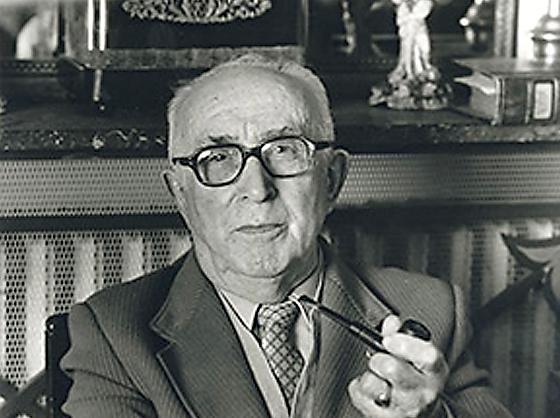
Roger Lecotté
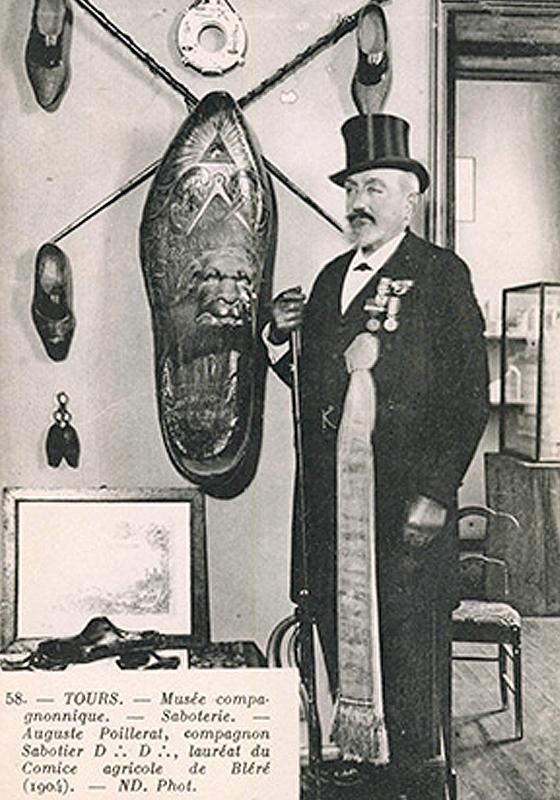
The clog-maker area in the first museum. Postcard dated 1911.
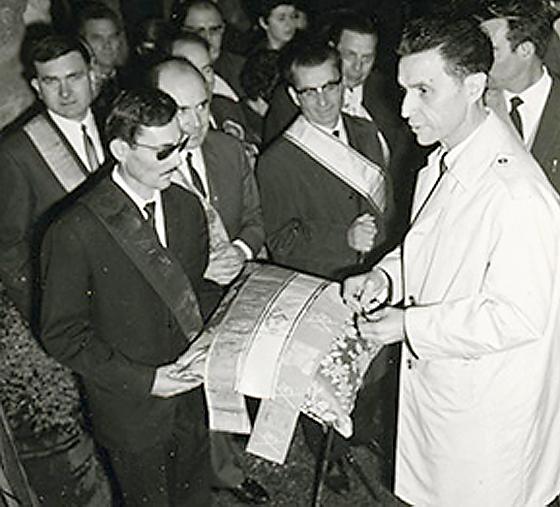
The mayor of Tours is given symbolic sashes on inauguration day 1968 ─ Photo DR
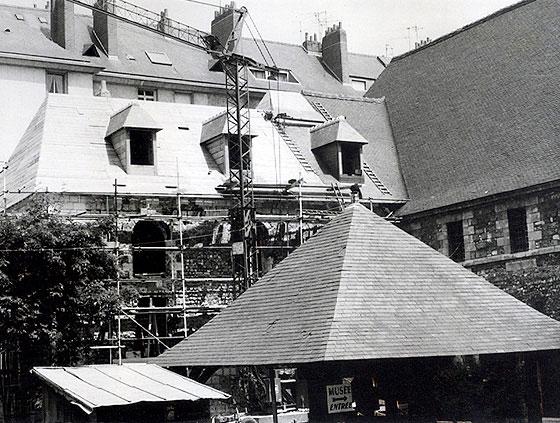
Addition of the west wing in 1975 ─ Photo DR
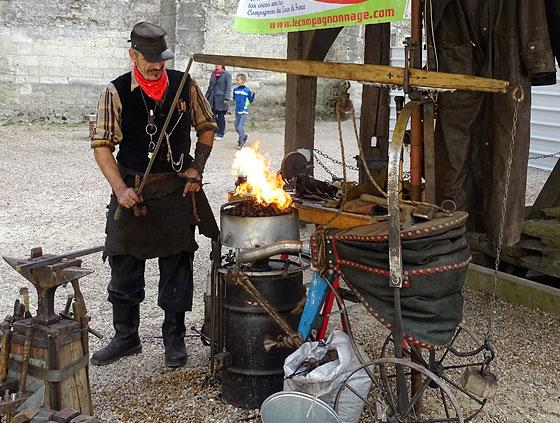
Blacksmithing skills on show ─ Photo DR
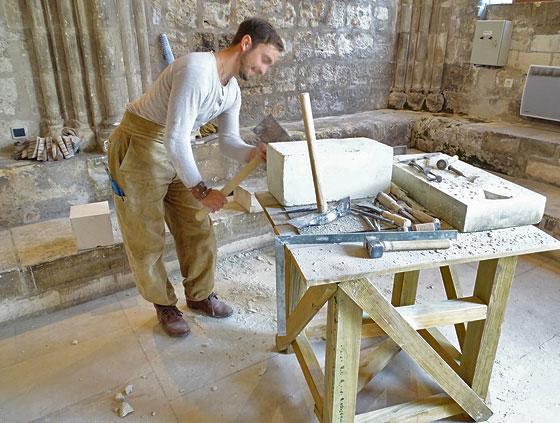
Stonecutting on show ─ Photo DR
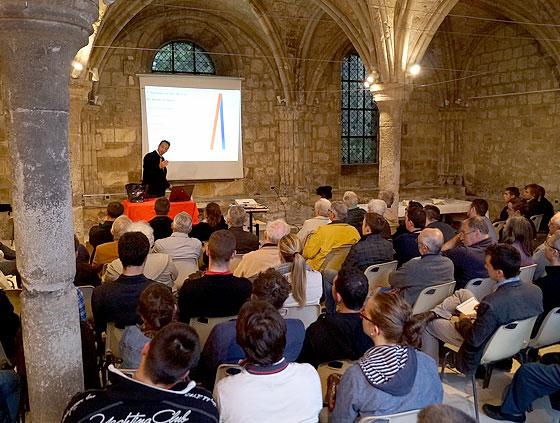
Lecture in the chapter hall ─ Photo E. Levourc’h
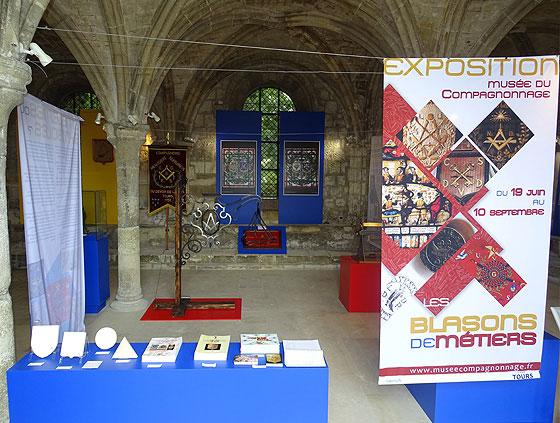
Exhibit of craft blazons, summer 2017 ─ Photo Musée du Compagnonnage.
